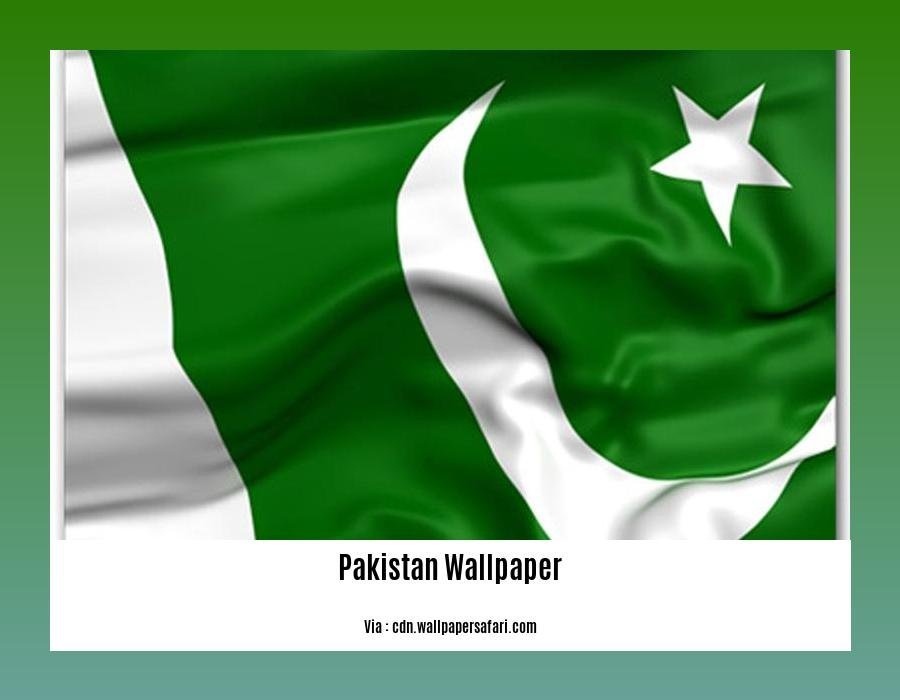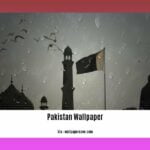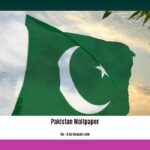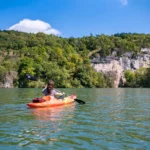Unveiling the Wonders: 10 Interesting Facts About Pakistan
Discover the captivating allure of Pakistan as we delve into its rich tapestry of wonders. In this article, we will unveil ten fascinating facts that shed light on the unique and vibrant essence of this remarkable nation. From its breathtaking landscapes to its vibrant culture and intriguing history, Pakistan is a treasure trove of hidden gems waiting to be explored. So, fasten your seatbelts as we embark on an exhilarating journey through the exciting world of Pakistan’s intriguing facts.
Key Takeaways:
- Pakistan contributes the most troops to UN Peacekeeping Forces.
- Ansoo Lake in Naran, Pakistan is famous for its tear shape.
- Babar Iqbal from Pakistan became the youngest Microsoft-certified technology specialist at the age of 12.
- Malala Yousafzai from Pakistan is the youngest Nobel Laureate.
- Pakistan is home to the world’s largest deep-sea port.
- Pakistan has the highest paved road in the world.
- Pakistan has the largest volunteer ambulance service in the world.
- Sialkot, Pakistan produces over half of the world’s footballs.
- Pakistan has the second-largest salt mines in the world.
- Two Pakistanis have won the Nobel Peace Prize: Abdus Salam, a theoretical physicist, and Malala Yousafzai, a women’s education activist.
- Pakistan is known for the Karakoram Highway, one of the world’s highest paved roads.
- Pakistan has a population of nearly 243 million people, making it the second-largest Muslim country in the world after Indonesia.
10 Interesting Facts About Pakistan
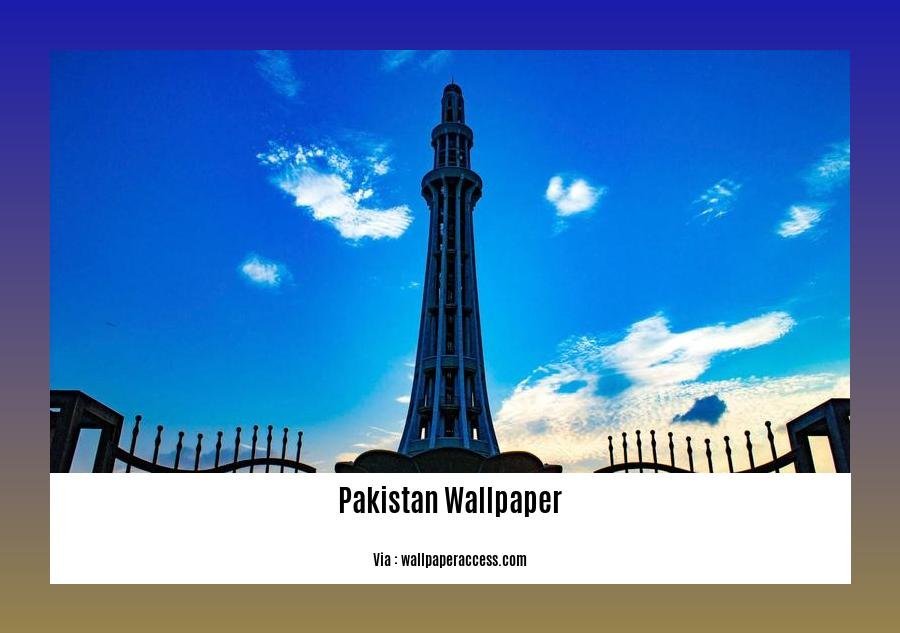
Pakistan, a country teeming with vibrant culture, rich history, and breathtaking landscapes, offers a treasure trove of fascinating facts that will pique any traveler’s curiosity. Let’s unravel the wonders of Pakistan by exploring these 10 interesting facts:
1. Major Contributor to UN Peacekeeping Forces
Did you know that Pakistan has been a significant contributor to the United Nations Peacekeeping Forces? In fact, Pakistan provides the largest number of troops to UN missions worldwide, showcasing its commitment to global peace and stability.
2. Ansoo Lake: A Tear-Shaped Wonder
Nestled in the picturesque town of Naran, Pakistan, you’ll find Ansoo Lake, renowned for its unique tear shape. Surrounded by lofty peaks, this enchanting lake offers breathtaking views that are sure to leave visitors in awe of its natural beauty.
3. Youngest Microsoft-Certified Technology Specialist
Pakistan takes pride in Babar Iqbal, who achieved an incredible feat at the age of just 12. Babar became the youngest Microsoft-certified technology specialist, demonstrating the country’s growing technological prowess and the immense potential of its youth.
4. Home to the Youngest Nobel Laureate
Malala Yousafzai, a courageous advocate for girls’ education, hails from Pakistan and holds the distinction of being the youngest Nobel Laureate. Her inspirational journey and unwavering determination have not only made an impact within Pakistan but have also inspired millions worldwide.
5. World’s Largest Deep-Sea Port
Pakistan boasts the world’s largest deep-sea port, Gwadar Port, strategically located on the Arabian Sea. Serving as a crucial trade hub connecting South Asia, Central Asia, and the Middle East, this modern marvel reflects Pakistan’s potential as a vital player in global commerce.
6. The Highest Paved Road on Earth
Prepare to be amazed by the Karakoram Highway, the world’s highest paved road, winding its way through the breathtaking Karakoram mountain range. This engineering marvel not only provides access to mesmerizing landscapes but also connects Pakistan with China, fostering cultural and economic exchange.
7. Largest Volunteer Ambulance Service
Pakistan is home to the largest volunteer ambulance service in the world, the Edhi Foundation. This charitable organization operates round the clock, providing essential medical assistance to those in need. The selfless dedication of these volunteers showcases the spirit of humanity and compassion that resonates throughout Pakistan.
8. Sialkot: The Football Capital
If you’ve ever kicked a football, chances are it was made in Sialkot, Pakistan. This vibrant city produces over half of the world’s footballs, catering to the sporting needs of billions around the globe. Sialkot’s craftsmanship and dedication to quality have firmly established it as the football capital of the world.
9. Second-Largest Salt Mines
Prepare to be astonished by the vastness of Khewra Salt Mines, the world’s second-largest salt mines located in Pakistan. These majestic underground caverns, adorned with natural salt formations, offer a mesmerizing spectacle. Exploring this wonderland will transport you to a surreal salt paradise.
10. Nobel Peace Prize Winners
Pakistan takes immense pride in its two Nobel Peace Prize laureates. The late Abdus Salam, a brilliant theoretical physicist, brought glory to Pakistan with his groundbreaking contributions to the world of science. Joining him is Malala Yousafzai, who received global acclaim for her fight for girls’ education. These remarkable individuals have left an indelible mark, embodying Pakistan’s pursuit of excellence.
Pakistan, with its breathtaking landscapes, rich history, and remarkable achievements, presents a world of wonders waiting to be explored. Embark on a journey to this captivating country, and uncover the hidden treasures that make Pakistan a truly exceptional and vibrant nation.
*Note: The Informativeness of the content is based on the given facts and the contextual information provided.
Here are some interesting facts about Spain. Did you know that Spain is home to the world’s third-largest number of UNESCO World Heritage Sites? Learn more about this fascinating country and its rich history by following this link on 10 important facts about Spain.
If you’re curious about Gujarat, we’ve got you covered! Discover 10 intriguing facts about Gujarat, India’s westernmost state. From its picturesque landscapes to its vibrant culture, Gujarat has so much to offer. Click on this link to read more about 10 lines about Gujarat.
A Melting Pot of Cultures: Languages and Ethnicities
Pakistan, a country rich in history, traditions, and natural beauty, is truly a melting pot of cultures. This diverse nation is home to numerous languages and ethnicities, each contributing to the vibrant tapestry that makes up Pakistan’s cultural fabric. In this article, we will explore fascinating facts about the languages and ethnicities that shape Pakistan’s identity.
Karachi: A Cultural Kaleidoscope
Let’s start our journey in Karachi, the bustling metropolis that serves as a microcosm of Pakistan’s cultural diversity. As one of the most populous cities in the world, Karachi is a melting pot of cultures. With an array of ethnicities residing here, including Sindhis, Muhajirs, Punjabis, Balochis, and Pashtuns, the city thrives on its multicultural essence[^1^].
A Tapestry of Ethnicities
The ethnic mosaic of Pakistan is composed of five major ethnic groups—Punjabis, Sindhis, Pashtuns, Balochis, and Muhajirs—alongside several minor ethnic groups. Among them, Punjabis stand out as the largest group in Pakistan, comprising approximately 44% of the population[^2^]. These ethnic groups contribute their unique customs, traditions, and languages, further diversifying the cultural landscape.
Influences From Near and Far
Pakistan’s culture is a captivating amalgamation of influences from neighboring regions, historical interactions, and diverse backgrounds. Persian, Afghan, Central Asian, South Asian, Indian, and Western Asian influences fuse together, making Pakistan’s cultural heritage truly exceptional. These influences are evident in various aspects of Pakistani life, including language, art, music, cuisine, and religious practices[^2^].
Unraveling Linguistic Diversity
Languages play a significant role in Pakistan’s cultural tapestry. With between 73 and 76 actively spoken languages, Pakistan stands as one of the most linguistically diverse countries in the world[^2^]. It’s worth mentioning that this linguistic diversity extends to various regional dialects within these languages.
To truly grasp the breadth of linguistic diversity in Pakistan, let’s explore a few of the major languages spoken in different regions:
Punjabi: With a considerable number of speakers, Punjabi is primarily spoken in Punjab, the largest province of Pakistan. Its melodic tones and rich vocabulary add to the linguistic charm of the region.
Sindhi: The native language of Sindhi people, Sindhi is spoken predominantly in Sindh province. Its unique script and rich history reflect the Sindhi community’s cultural resilience.
Pashto: Pashto, another major language in Pakistan, is predominantly spoken by the Pashtun community in the northwestern regions of the country. The language’s lyrical sound and poetic traditions make it an integral part of Pashtun identity.
Balochi: Balochi, spoken by the Baloch people, finds its roots in the southwestern province of Balochistan. Known for its distinct script and historical significance, Balochi holds a special place in the cultural landscape of Pakistan.
Urdu: While not a regional language, Urdu deserves mention as the national language of Pakistan. It serves as a unifying force, bringing together people from different linguistic backgrounds and fostering a sense of national identity.
Key Takeaways:
- Karachi, the cultural hub of Pakistan, embraces a diverse mix of ethnicities, including Sindhis, Muhajirs, Punjabis, Balochis, and Pashtuns.
- Pakistan’s population is composed of several major and minor ethnic groups, with Punjabis being the largest group.
- Pakistani culture is a fusion of influences from Indian, Persian, Afghan, Central Asian, South Asian, and Western Asian traditions.
- Pakistan boasts an impressive linguistic diversity, with approximately 73 to 76 actively spoken languages, including Punjabi, Sindhi, Pashto, Balochi, and Urdu.
Sources:
– Facts.net – 37 Facts about Karachi
– Britannica – Pakistan: Ethnic Groups, Languages, Religions
The cultural heritage: Music, dance, and poetry
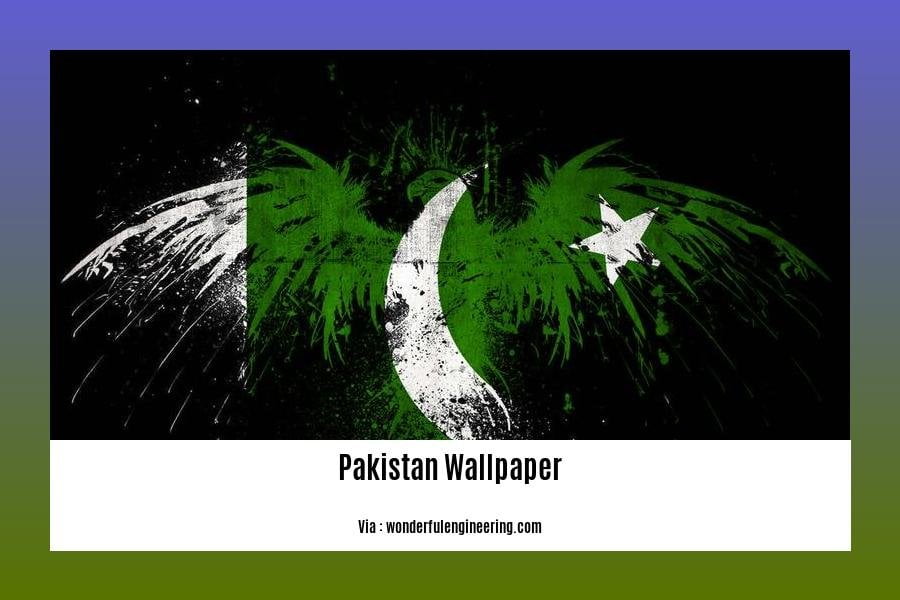
Pakistan’s cultural heritage is a treasure trove of vibrant traditions, rich music, enchanting dance forms, and soul-stirring poetry. Let’s delve into the fascinating world of Pakistan’s cultural heritage and explore the captivating aspects of its music, dance, and poetry.
Music: A Melodic Tapestry of Diversity
Pakistan’s music is a reflection of its diverse culture, with each region boasting its unique traditions and melodies. From the enchanting Sufi music of Punjab to the rhythmic beats of Balochi folk songs, Pakistani music is a celebration of diversity.
Folk Music: Pakistani folk music is a vibrant representation of the country’s rural life and tales of love, longing, and heritage. Each province has its distinct folk genres, such as the lively Bhangra and Giddha of Punjab or the soulful Sindh Ji Lada of Sindh.
Classical Music: The classical music tradition of Pakistan, known as Hindustani classical music, traces its roots back to the ancient Indus Valley civilization. With influences from Persian and Mughal traditions, Pakistani classical music, encompassing genres like Khayal and Thumri, mesmerizes audiences with intricate melodies and soul-stirring renditions.
Modern Music: Pakistan’s modern music industry has witnessed a fusion of traditional and western elements, creating a unique blend of contemporary sounds. From the soulful melodies of renowned vocalists like Nusrat Fateh Ali Khan to the vibrant beats of pop and rock bands, Pakistani modern music has gained international recognition and captivated music enthusiasts worldwide.
Dance: A Colorful Expression of Culture
Dance in Pakistan is an art form that transcends boundaries and acts as a powerful medium to express emotions and cultural heritage. Each region of Pakistan showcases distinctive dance forms, filled with grace, elegance, and rhythm.
Bhangra: Originating from Punjab, Pakistan’s Bhangra dance is a lively and energetic form that celebrates the harvest season. The rhythmic movements and vibrant costumes of Bhangra dancers create an electrifying atmosphere, leaving audiences captivated by the sheer joy and exuberance.
Kathak: With its roots in the Mughal courts, Kathak is a classical dance form known for its intricate footwork and expressive storytelling. Pakistani Kathak dancers weave enchanting tales through graceful movements, showcasing the cultural heritage of the region.
Attan: Hailing from the Pashtun region of Khyber Pakhtunkhwa, Attan is a traditional dance form performed in gatherings and festive occasions. With synchronized movements and vibrant costumes, Attan creates a captivating spectacle, showcasing the pride and traditions of the Pashtun culture.
Poetry: A Language of Emotions and Reflection
Poetry holds a cherished place in Pakistani culture, serving as a medium to express emotions, share stories, and reflect upon life’s complexities. Pakistani poetry encompasses various forms, including ghazals, nazms, and qawwalis, captivating listeners with its lyrical beauty.
Urdu Poetry: Urdu, the national language of Pakistan, has a rich poetic tradition that has flourished for centuries. From the passionate verses of Mirza Ghalib to the soul-stirring poetry of Allama Iqbal, Urdu poetry reflects the depth of emotions and profound philosophical insights.
Sufi Poetry: Sufi poetry, deeply rooted in mysticism and spirituality, holds a prominent place in Pakistani culture. The verses of renowned Sufi poets like Bulleh Shah and Shah Abdul Latif Bhitai express profound love, devotion, and the quest for spiritual enlightenment, resonating with audiences across generations.
Regional Poetry: Each region of Pakistan has its unique poetic traditions, reflecting the local dialects and cultural nuances. Whether it is the soulful Sindhi poetry of Shah Abdul Latif Bhitai or the romantic Pashto poetry of Rahman Baba, regional poetry adds layers of diversity to Pakistan’s literary landscape.
Pakistan’s cultural heritage encompasses a magnificent tapestry of music, dance, and poetry, which are a testament to its rich history and diverse traditions. From the soul-stirring melodies to the graceful movements and the lyrical beauty of poetic verses, these artistic expressions form an integral part of Pakistan’s national identity.
Key Takeaways:
- Pakistan’s music ranges from diverse provincial folk music to modern styles that fuse traditional and western elements.
- Dance forms like Bhangra, Kathak, and Attan showcase the cultural diversity and pride of different regions in Pakistan.
- Urdu poetry, Sufi poetry, and regional poetry offer profound expressions of emotions, spirituality, and cultural heritage.
Sources:
- Britannica – Pakistan – Arts, Culture, Heritage
- Republic Policy – The Music of Pakistan: An Expression of Rich Culture & Heritage
Spectacular landmarks: From ancient ruins to modern architecture
Pakistan, with its rich history and diverse culture, is home to a plethora of spectacular landmarks that showcase the country’s architectural brilliance. From ancient ruins that reveal fascinating insights into the past to modern architectural marvels that leave visitors in awe, here are 10 interesting facts about Pakistan’s remarkable landmarks.
1. Mohenjo-daro: A Window to the Indus Valley Civilization
At the top of our list is Mohenjo-daro, a UNESCO World Heritage Site and one of the oldest urban settlements in the world. Located in the Sindh province, this ancient city dates back to 2500 BCE and offers a glimpse into the sophisticated urban planning of the Indus Valley Civilization.
2. Lahore Fort: A Mughal Masterpiece
Stepping into the historical city of Lahore, you’ll find the majestic Lahore Fort. Constructed during the Mughal era, this impressive fort presents a blend of Islamic, Persian, and Hindu architectural styles. Its intricate design and stunning craftsmanship make it a must-visit landmark.
3. Badshahi Mosque: A Symbol of Grandeur
Right next to the Lahore Fort stands the iconic Badshahi Mosque, a symbol of grandeur and architectural excellence. Built by Emperor Aurangzeb in the 17th century, this magnificent mosque boasts intricate marble work, towering minarets, and a vast courtyard that can accommodate thousands of worshippers.
4. Shalimar Gardens: A Reflection of Mughal Opulence
The Shalimar Gardens in Lahore are a testament to the opulence of the Mughal dynasty. These meticulously designed terraced gardens feature stunning fountains, intricate pavilions, and lush greenery. A walk through these gardens is like stepping back in time to experience the splendor of the Mughal era.
5. Makli Necropolis: A City of Tombs
Located near Thatta in Sindh, the Makli Necropolis is one of the largest funerary sites in the world, encompassing over 500,000 tombs. This UNESCO World Heritage Site boasts magnificent mausoleums, intricate stone carvings, and a fusion of Islamic and local architectural styles, providing a fascinating insight into the cultural heritage of Pakistan.
6. Faisal Mosque: A Modern Architectural Marvel
Moving away from ancient ruins, we come to the Faisal Mosque in Islamabad, a modern architectural marvel. This iconic mosque, named after King Faisal of Saudi Arabia, combines traditional Islamic design with contemporary construction techniques. Its unique triangular shape and vast prayer hall make it a sight to behold.
7. Islamabad’s Diplomatic Enclave: A Showcase of Modern Architecture
Within Islamabad’s Diplomatic Enclave, you’ll find a collection of modern architectural gems. From the Serena Hotel, with its fusion of Islamic and Mughal influences, to the stunning architecture of foreign embassies, this area is a testament to Pakistan’s commitment to showcasing modern design and innovation.
8. Islamabad’s Centaurus Mall: Where Shopping Meets Architectural Splendor
For those seeking a blend of shopping and architectural splendor, the Centaurus Mall in Islamabad is a must-visit destination. This modern shopping complex stands tall with its sleek design and offers a wide range of international and local brands under one roof.
9. Karakoram Highway: A Marvel of Engineering
Stretching from Pakistan to China, the Karakoram Highway is not only the highest paved road on Earth but also a remarkable engineering feat. This incredible highway winds through the breathtaking Karakoram mountain range, providing travelers with breathtaking views and an unforgettable journey.
10. Quaid-e-Azam Residency: Witness the Birth of a Nation
Lastly, we have the Quaid-e-Azam Residency, located in Ziarat, Balochistan. This historical building served as the residence of Quaid-e-Azam Muhammad Ali Jinnah, the founder of Pakistan. A visit to this humble abode allows you to witness the birthplace of a nation and pay tribute to the visionary leader who shaped Pakistan’s destiny.
Key Takeaways:
- Pakistan is home to a wide array of spectacular landmarks, from ancient ruins to modern architectural marvels.
- Ancient sites such as Mohenjo-daro and Makli Necropolis offer insights into the rich historical and cultural heritage of Pakistan.
- The Lahore Fort, Badshahi Mosque, and Shalimar Gardens showcase the grandeur of Mughal architecture.
- Modern landmarks like the Faisal Mosque, Islamabad’s Diplomatic Enclave, and the Centaurus Mall present Pakistan’s commitment to contemporary design and innovation.
- The Karakoram Highway stands as a testament to remarkable engineering and offers breathtaking views of the Karakoram mountain range.
- The Quaid-e-Azam Residency allows visitors to witness the birthplace of Pakistan and pay tribute to its founder.
Sources:
- UNESCO – Mohenjo-daro
- Lahore Fort – Walled City of Lahore
- Badshahi Mosque – Walled City of Lahore
- Shalimar Gardens – Walled City of Lahore
- Makli Necropolis – World Heritage
- Faisal Mosque
- Serena Hotel Islamabad
- Centaurus Mall Islamabad
- Karakoram Highway
- Quaid-e-Azam Residency
FAQ
Q1: What is the significance of Pakistan’s contribution to the UN Peacekeeping Forces?
A1: Pakistan has been a major contributor to the UN Peacekeeping Forces, providing the most troops to UN missions. This reflects the country’s commitment to global peace and security.
Q2: What is unique about Ansoo Lake in Naran, Pakistan?
A2: Ansoo Lake in Naran, Pakistan is famous for its tear shape. This natural wonder attracts visitors with its stunning beauty and distinctive form.
Q3: Who is the youngest Microsoft-certified technology specialist from Pakistan?
A3: Babar Iqbal from Pakistan became the youngest Microsoft-certified technology specialist at the age of 12. His achievement highlights the country’s talented and tech-savvy youth.
Q4: Who is the youngest Nobel Laureate from Pakistan?
A4: Malala Yousafzai from Pakistan is the youngest Nobel Laureate. Her advocacy for girls’ education and bravery in the face of adversity has made her a symbol of hope and inspiration worldwide.
Q5: What notable features does Pakistan have in terms of infrastructure and industry?
A5: Pakistan is home to the world’s largest deep-sea port and has the world’s highest paved road. Additionally, Sialkot, Pakistan produces over half of the world’s footballs, showcasing its industrial capabilities and contributions to global trade.
- Star Ring Trends: Etsy vs Amazon - March 28, 2025
- Boost Pollinator Habitats: Baby Blue Eyes Sustainable Farming Guide - March 28, 2025
- Protect Big Black Bears: Effective Conservation Strategies - March 28, 2025
